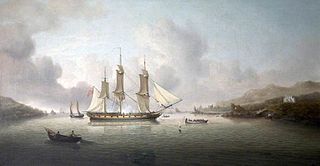Three Royal Navy ships have borne the name HMS Lutin or Lutine, Lutine being French for "the tease" or "tormentress" or more literally "imp", and Lutine the feminine:

HMS Magnanime was a 64-gun third-rate ship of the line of the Royal Navy, launched on 14 October 1780 at Deptford Dockyard. She belonged to the Intrepid-class designed by Sir John Williams and later was razeed into a 44 gun frigate.
Eight ships of the Royal Navy have borne the name HMS Espiegle
During the period of the French Revolutionary and Napoleonic Wars, there were two or three vessels known as His Majesty's hired armed cutter Active that served the British Royal Navy. The reason for the uncertainty in the number is that the size of the vessels raises the possibility that the first and second may have been the same vessel.
The French brig Alerte was launched in April 1787. The Royal Navy captured her at Toulon in August 1793, and renamed her HMS Vigilante. The British set her on fire when they evacuated Toulon in December of that year. After the French rebuilt her as Alerte, she served at the Battle of Aboukir Bay. The British recaptured her in June 1799 and took her into service as HMS Minorca. Minorca was sold in 1802.
The Musquito class was a Royal Navy class of two 4-gun floating batteries built to a design by Admiral Sir Sidney Smith specifically to serve with his squadron in French coastal waters. Both were named and ordered under Admiralty Order 26 May 1794.

Spider has been the name of a number of vessels of the British Royal Navy;

HMS Trepassey was the second vessel of her two vessel class, with both vessels being launched in 1789. John Henslow designed the small sloops for coastal patrol duties off Newfoundland, "to protect the fisheries and inquiring into abuses." In 1793, after the outbreak of the French Revolutionary Wars, she accepted the surrender of Miquelon. This appears to have been the highpoint of her career. She disappears from the records in 1807.
The hired armed lugger Daphne served the Royal Navy from 2 November 1794 to 19 December 1796. She was armed with twenty-two 4-pounder guns and was of 1606⁄94 tons burthen (bm)
Two vessels have borne the designation, His Majesty's hired armed cutter Lion. The first served during the French Revolutionary Wars, capturing five privateers and several merchant vessels. The second served briefly at the start of the Napoleonic Wars. Both vessels operated in the Channel. The two cutters may have been the same vessel; at this juncture it is impossible to know. French records report that the French captured the second Lion in 1808 and that she served in the French Navy until 1809.
The hired armed ship Sir Thomas Troubridge or Thomas Troubridge, or Troubridge, or Trowbridge) was a ship that the Royal Navy put her under contract from 7 July 1804 to 9 May 1806. She was of 473 74⁄94 tons burthen (bm), and carried eighteen 6-pounder guns and eight 18-pounder carronades. She had a brief, astonishingly unremarkable career while under contract to the Navy.
There may have been two or possibly three hired armed schooners Princess Charlotte that the Royal Navy took under contract during the Napoleonic Wars.

Crachefeu was a French Navy gun brig launched in 1793. Sir Richard Strachan's squadron captured her in 1795 in Cartaret Bay, and the Royal Navy took her into service as HMS Crachefeu. She then sailed to the West Indies where she broken up in 1797, or possibly around 1802.
The French gunboat Légère was a felucca that the French Navy commissioned in August 1794 at Toulon. The Royal Navy captured her in September 1798 and took her into service as HMS Legere. The Royal Navy disposed of her by 1803.
Two vessels named His Majesty's Hired armed cutter Industry briefly served the British Royal Navy during the Napoleonic Wars as hired armed vessels.
Hannibal was an armed ship of 16 guns that the British Royal Navy hired in 1804. On 25 September she was reported to be escorting troop transports from Plymouth to the Downs. She was under the command of Commander Richard James Lawrence O'Connor on 16 November when she drifted from her anchors in the Downs; she was wrecked near Sandown Castle, Isle of Wight. Her crew was saved.
HMS Augustus was a Thames sailing barge that the British Royal Navy purchased in 1795 and used as a gun-vessel of two or three guns. She was under the command of Lieutenant James Scott when she was wrecked at Plymouth on 7 July 1801.

HMS Enchantress was the mercantile vessel of the same name, launched in 1802 at Ringmore. The British Royal Navy purchased her in 1804. She then spent her career sitting at Bristol serving as a storeship. She was transferred to the Customs service in 1817 and may have served with it until c.1850.
Amphitrite was launched at Scarborough in 1791. In 1793–1794 she served the British Royal Navy as a hired armed vessel. She was last listed in 1797.
One to three vessels may have served the British Royal Navy under the name Cacafogo, or Cacafoga, or Cacafuago, or Cacafuego, all being colloquial Spanish for "Spitshit" or "Shitfire".